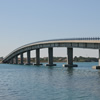We bring you a list of the most famous sights and locations you need to visit if you are on the island of Vir or in the region of Northern Dalmatia.
Beach Cove Duboka Draga Vir is especially desirable for the people of this place. Guests will always recommend visiting the beach, and often say they are the most beautiful beach in Vir. The islanders say that Cove Duboka Draga is the most beautiful beach in Vir. Nearby is Crvenka Beach. It is clear of the clear sea and the distance from the settlements. It is located on the northwest side of the island, outside of the island settlements.

The Zitna Vir beach is one of the main ones on the island of Vir. The beach is decorated and equipped with all the necessary things for this purpose. It is 300 meters wide, very popular and always well-populated. In addition to renting pedal or other props for yourself or children, there are numerous local restaurants and restaurants offering refreshments or a delicious meal.

The Crvenka beach seems to be a non-intrusive and very inaccessible beach. If you look at the shore, you can easily conclude that this is not the place for everyone. This beach actually attracts adventurers and nature lovers. If you are interested in the underwater world and the wildlife that takes place below the surface of the sea, here you will surely enjoy it. The rocky bottom attracts many species and, on the other hand, dampens the presence of people.
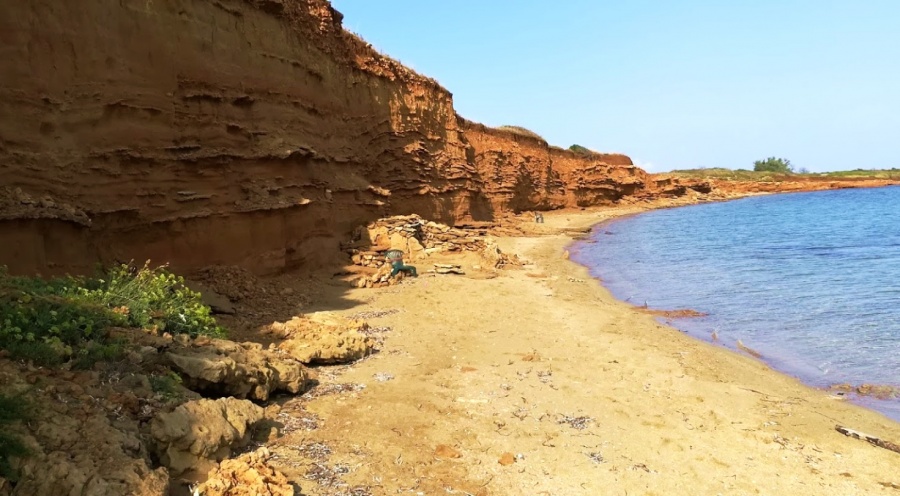
Jadro beach Vir is one of the most popular beaches on the island of Vir, the beach is pebble on the coast and after a few meters the sea is sandy. The beach is known for its gentle entrance into the sea so it is suitable for children. Amenities at the Jadro beach include sun umbrella rental and sun loungers, rescuers, beach bars, cafes and restaurants.
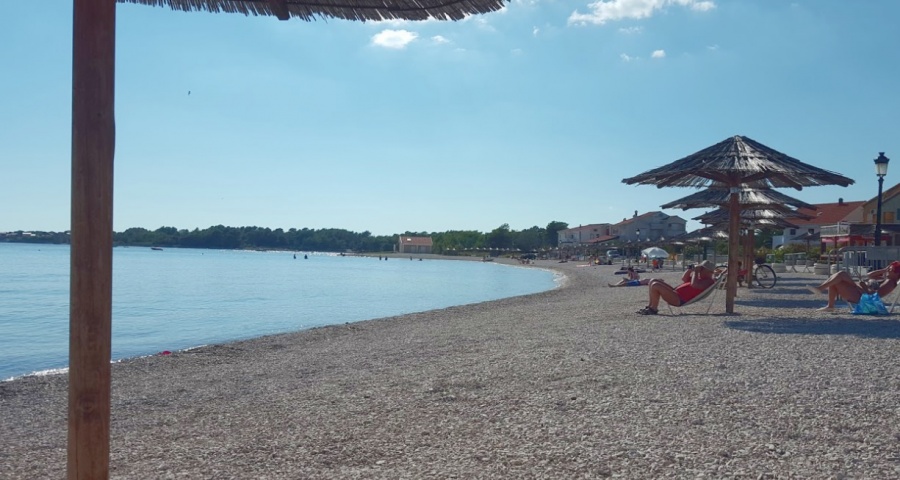
Church of St. The Nicholas of the Nin Valley dates back to the 11th century.Crkva sv. Nicholas is located at the site of Prahulje near Nin, and is extremely important for the rulers from the Croatian dynasty and for the history of the ancient city of Nin.
According to the folk tradition, in the Nin were crowned by seven kings, and on the occasion of the crowned crown prince in glorious accompaniment he came to the church of St. Nicholas, where he would be presented to the people as a sign of his royal authority, with the sword he would cut off from all the four sides of the world a quotation from the Proceedings works "History of the City of Nin".
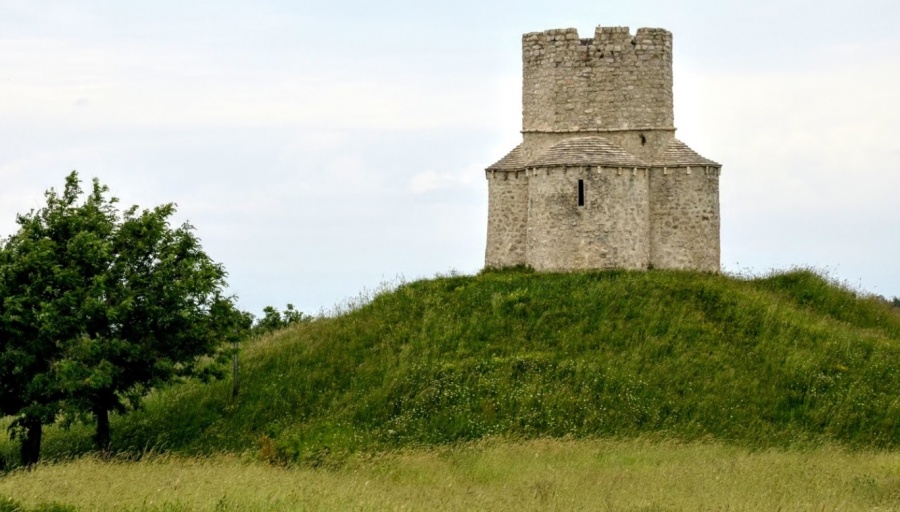
Church of Sv. The Nin Cross It is interesting, and we will immediately mention that the church of St. The cross is also known as the smallest cathedral in the world. This small church is the most famous nineteenth-century building. The Church of the Holy Cross is one of the best preserved monuments of old Croatian church architecture, and it is also a valuable building in Croatia rich collection. It was built in the 9th century and its layout is in the form of an equal Greek cross. The exterior of the church is adorned with a series of blind niches and a recognizable dome.
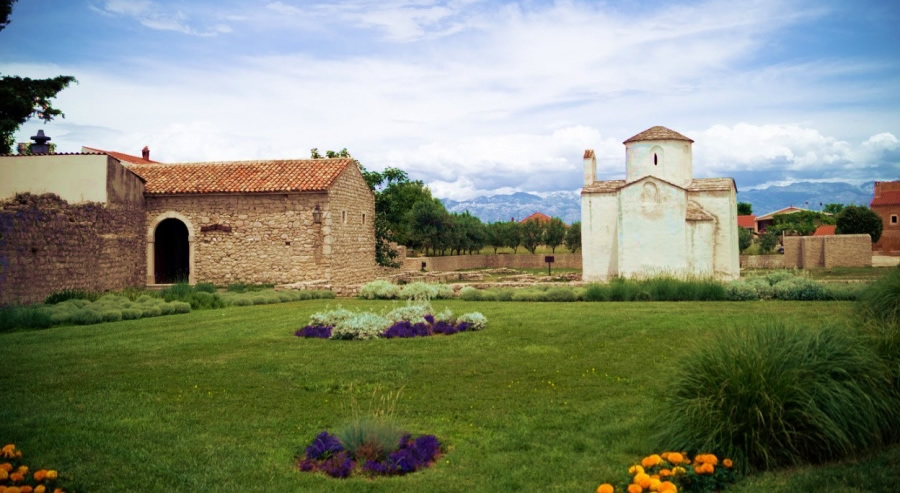
Roman Forum Zadar Today Zadar is really decorated with many buildings from different periods. One interesting is certainly the Roman forum, which is still quite preserved today, and through history it was upgraded to various details from the period through which the city itself was passing. The Roman forum in Zadar is the largest area of its kind on the eastern side of the Adriatic. The founder of the forum was the first Roman car Augustin. This is evidenced by two inscriptions in stone dating back to the 3rd century, when the construction of the forum was completed. By surface, the forum in Zadar occupies 90 × 45 meters, but it changes over time.
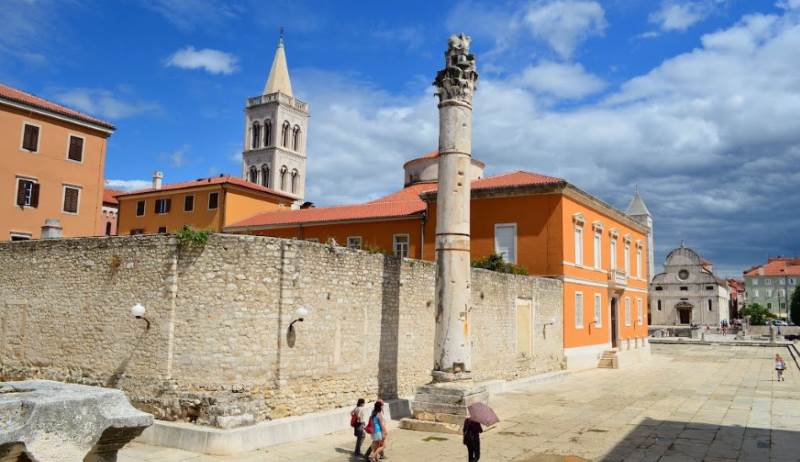
Zadar - National Square The National Square in Zadar is decorated with many historic buildings, among which is the beautiful church of St. Lovre.
The pre-Romanesque church has been beautifully preserved for a long period of its existence. Today it adorns a part of the square and enriches it with offer - both historical and cultural. In the eastern part of the square, the Ghirardini Palace was built in a Romanesque style, with a 15th-century Renaissance style balcony.
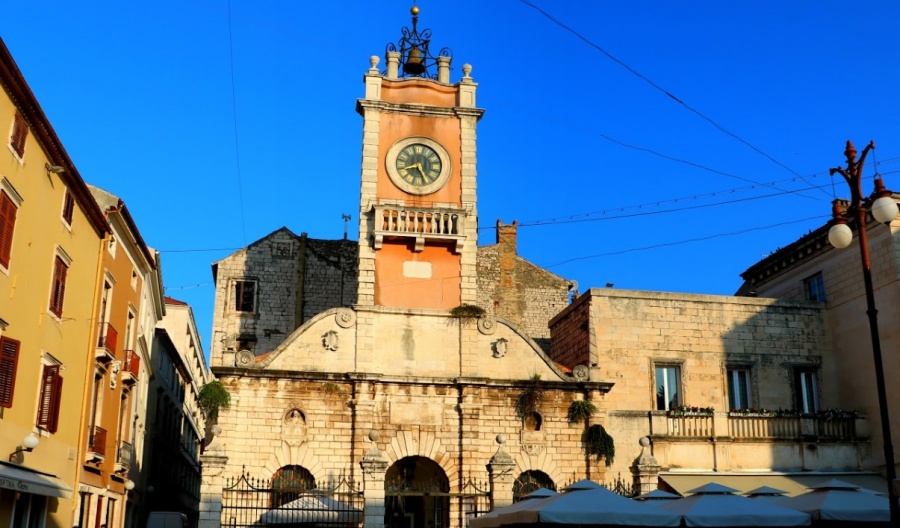
Church of Sv. Donata Zadar This Zadar church is also a trademark of the city, and belongs to the most famous and most important European pre-Romanesque churches.
The type of construction follows the shape of the church chapels of the circular floor from the early to the Carolinian period. However, with its unusual cylindrical shape and double interior space, with its height of 27 meters and a width of 22 meters, stands out with its originality. According to tradition, the bishop of St. Donat in Zadar was built in the 9th century and is mentioned in the 10th century in his famous work "On Governance of the State" Byzantine Emperor Konstantin Porfirogenet. It was originally dedicated to the Holy Trinity, and the name of St. Donatus has only been called since the 15th century.

Salute to the Sun In addition to a large number of historic buildings, walls and old ports, Zadar has recently become richer for a modern architectural installation - Greetings to the sun. Greetings to the sun is the installation of architect Nikola Bašić, located in the Zadar harbor in the stone pavement of the city waterfront. Zadar's waterfront is a place for a pleasant walk, conversation and rest on the benches facing the sea. By itself, the waterfront is a beautiful and pleasant place for all who are visiting. It is additionally decorated with two modern installations - Hello Sun and Sea Organ, which has become one of the most remarkable in the world.
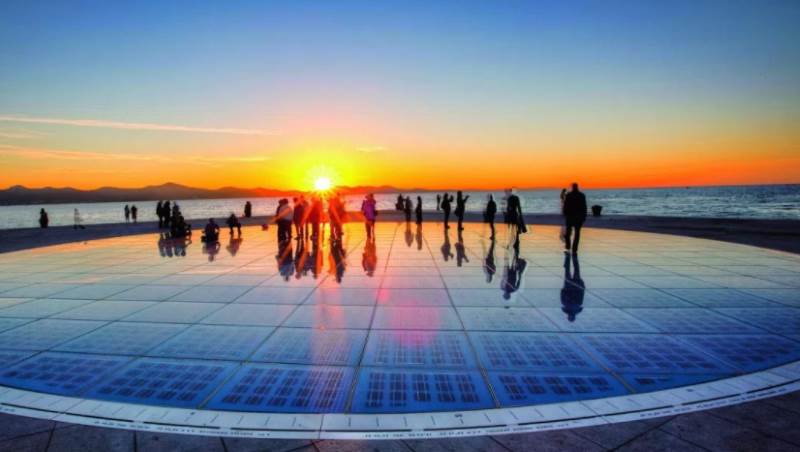
Zadar Cathedral The Zadar Cathedral of St. Stošija, or Anastasia, is a three-nave Romanesque building. It is also the largest church in Dalmatia.
It was built on two occasions, in the 12th and 13th centuries, with the preserved old from the 9th and 11th centuries, which grew up in the place of an early Christian basilica. The beginnings of the Zadar cathedral building date back to far-reaching history, even in the 4th or 5th centuries.
The patron saint of Sv. Two pups were donated to Stošija. The first was donated by Pope Alexander III. for his visit to Zadar in 1177, while Pope John Paul II. for a pastoral visit to Zadar on June 9, 2003, donated in front of the front door of the cathedral.

The Archaeological Museum in Zadar was founded in 1832 as the second oldest museum in Croatia and one of the oldest in this part of Europe. We are proud of a really rich collection of exhibits and we invite all lovers of history and culture to visit us. In the Archaeological Museum we have exhibited objects from Roman times and various prehistoric materials from the period of Paleolithic, Neolithic and Metalic Periods as well as archaeological remains from time to time 7th and 12th centuries, most of which are linked to the material and spiritual heritage of Croats.

Zadar Museum If you come to Zadar, on a summer vacation or on another occasion, you have plenty of time and you will want to see the city - then definitely visit the Museum of Illusions.
This somewhat unusual tourist offer for a city like Zadar is actually interesting just for that. When you look at all the city's antiquities, or at least most of them, the Illusion Museum will refresh your experience and throw you into a new dimension.

Šibenik Cathedral - Due to its exceptional values, the Cathedral of Šibenik was listed in the UNESCO World Heritage List in 2000. The cathedral was built on the south side of the central old town square, on the site of the Romanesque church of St. James. Construction did not end soon, even more - it lasted for over 100 years. The Cathedral in Sibenik is certainly the most important architectural achievement of the period between the 15th and 16th centuries on the territory of Croatia. It is special for many things, and today it is a symbol of this city.
The idea of building a large cathedral church dates back to 1298. In that period, Sibenik got its own bishopric and the title of the city. In this way, the need for the cathedral came in a natural sequence that took place in most other cities.

The Krka National Park (Skradin), famous for its magnificent waterfalls, is located near Skradin in the Šibenik-Knin County. The second most visited national park in Croatia offers tourists numerous values, from highly preserved nature and beautiful landscapes to cultural sights and active holidays. If you are a nature lover or want to explore the culture of the local population, NP Krka is an ideal destination for you. One of the most important things people often forget to mention is the beautiful Skradin town with which almost every trip to NP Krka begins. With less than 500 inhabitants, Skradin offers a history and cultural heritage that could attract many bigger cities. From Skradin there are several shipping lines that directly drive to waterfalls, and transportation is included in the ticket price. In a less than half an hour drive you can enjoy the beautiful Krka coast, and you can also see the little swamp. If you have an adventurous spirit, you can come to the NP Krka on a hiking or cycling trail. It is recommended that you visit the park as early as possible so you can enjoy the forest of waterfalls and the beautiful nature.

Kornati National Park was proclaimed in 1980 when it was protected. It is a seemingly desolate place, but the Kornati are rich in every sense of the word. In fact, the Kornati National Park makes a large part of the island of the same name in the Adriatic Sea. The Kornati are located in the Croatian part of the Adriatic in Central Dalmatia. If you are looking at the map of the Croatian islands, you can find the Kornati if you look west of Sibenik. Until you get there, you can only look at a few photos below. Kornati appears to be released, but in this case the look is very cheeky.
The total surface of this park is about 220 square kilometers and is made up of larger and smaller islands, and rocks emerging from the blue sea of the Adriatic Sea. Of the total area of Kornati, only ¼ of the mainland is occupied. The rest of the National Park is the sea and the living world that lives there.

Paklenica National Park According to its proclamation, the National Par Paklenica is the second in Croatia. It has been proclaimed national park since 1949, or more precisely on 19 October 1949. Paklenica was proclaimed a park and a few months after the Plitvice Lakes National Park.
The highest peaks of the park are: Vaganski vrh (altitude 1757 meters), and the top of the Holy Mountain (altitude 1753 meters).
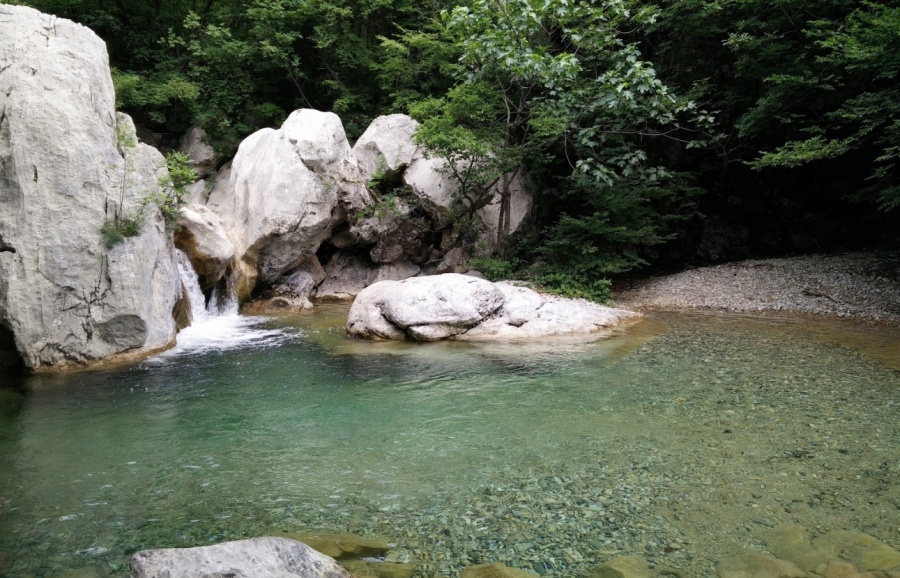
Outside the village, beside Vrsi near Nin, the beach of Ričina was hidden. In fact, Ričina is a place for campers and true nature lovers. A small cove sheltered a sandy beach that at first glance enchants everyone. The beach is truly representative, preserved in natural splendor, enriched with just a few sunflowers from palm leaves. During the season, you can see tents, deckchairs and many other bathing equipment on the beach.
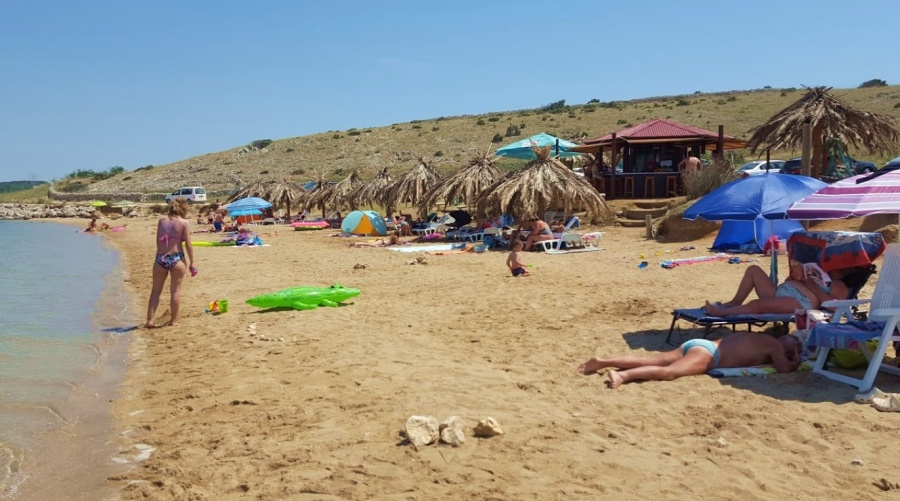
Beach Bilotinjak Privlaka Nin The natural sandy beach - Bilotinjak - lies between Privlaka and Zaton. It is located in the Zadar Channel, hidden from inhabited places and is a true natural oasis for all lovers of such an environment. The sea is also shallow on the coast, and the beach is suitable for all-day excursions with family or couples.
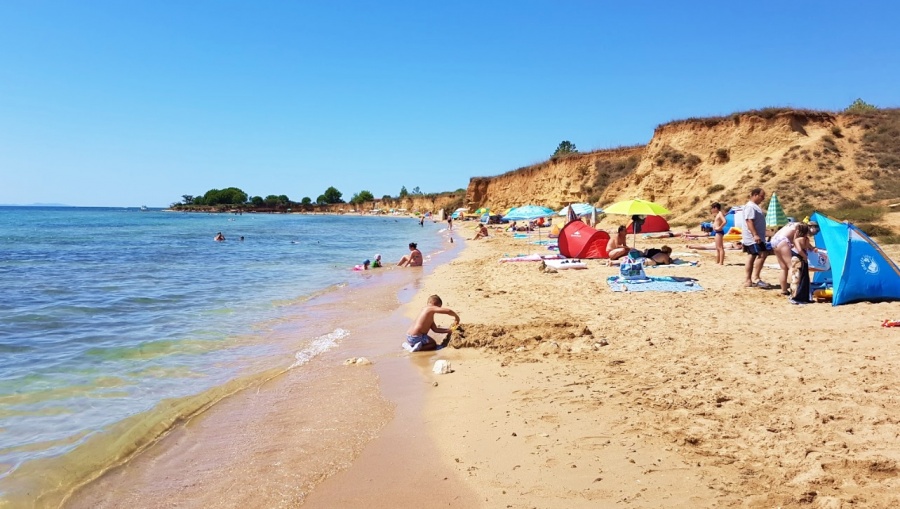
Telašćica Nature Park In the deep bay in the south of the island lies Telašćica bay. Telascica is located in the name Park Nature. All this area is surrounded by natural coves and beautiful beaches. On the one hand, Telascica is covered by the already mentioned beaches, while on the other end are cliffs, covered with lush vegetation.

Veli Žal Dugi otok is another beach on Long Island. It is a pebble beach in front of the islet of Mežanj. The beach is located on the uninhabited part of Dugi Otok, and overlooks the open sea. If you go to Veli Žal, just follow the well-marked asphalt road, and after a short walk you are on the beach for 5 minutes.

Sakarun is a sandy beach about 800 meters long. It is located on the northwest side of Dugi otok, and with its view of the southern part of the Adriatic, will enchant you all the guests who want unforgettable moments in true natural ambience. Although the beach is shallow, only after a couple meters of depth reaches an average of 10 meters. The particularity of this beach and the colors of the sea that plagued it, gives fine sand, while on the shore is the thicker pebble, the so-called stone pebbles. The beach is surrounded by pine trees, which give their guests a natural shade. On the Sakarun beach you can find three catering facilities, with a choice of meals and drinks. In addition to natural shade, if you need it, you can rent awnings made of canvas, which fit perfectly into the natural setting of the beach.

Kraljičina plaža Nin If you are going from Nin to the island of Vir, on the right you have a small settlement that conceals this beautiful sandy beach. Kraljičina Beach is located behind a small roadway of the Street of the Skirt Road, and despite its being in the resort, this beach still offers a completely natural atmosphere. The sea is shallow, very suitable for children's play, playing picigines or some other water sports. Next to the beach there is a catering facility with a beach party offer. There are guests hidden under the umbrellas, but if you are on the beach, take a sunbath with you. The beach does not have natural shade, so it is good to have your own sunshade. Nearby is the beautiful beach Ninska Laguna.

Beritnica Beach is located on Pag, south of the small village of Metajna. It is special in naturally complex rocks in shallow water, great for photographs or simply for admiration from the shore. Take a break at Beritnica with a beautiful three-rock scene. Those little more skilled can climb to one of them and memorize unforgettable moments from the summer vacation. The beach is otherwise surrounded by rocky landscapes, with a smaller pebble beach. There is no natural shade, as well as no cafes (closest to the beach of Ručica).


Island Vir Croatia Surroundings - what to visit
Beach Cove Duboka Draga Vir is especially desirable for the people of this place. Guests will always recommend visiting the beach, and often say they are the most beautiful beach in Vir. The islanders say that Cove Duboka Draga is the most beautiful beach in Vir. Nearby is Crvenka Beach. It is clear of the clear sea and the distance from the settlements. It is located on the northwest side of the island, outside of the island settlements.

The Zitna Vir beach is one of the main ones on the island of Vir. The beach is decorated and equipped with all the necessary things for this purpose. It is 300 meters wide, very popular and always well-populated. In addition to renting pedal or other props for yourself or children, there are numerous local restaurants and restaurants offering refreshments or a delicious meal.

The Crvenka beach seems to be a non-intrusive and very inaccessible beach. If you look at the shore, you can easily conclude that this is not the place for everyone. This beach actually attracts adventurers and nature lovers. If you are interested in the underwater world and the wildlife that takes place below the surface of the sea, here you will surely enjoy it. The rocky bottom attracts many species and, on the other hand, dampens the presence of people.

Jadro beach Vir is one of the most popular beaches on the island of Vir, the beach is pebble on the coast and after a few meters the sea is sandy. The beach is known for its gentle entrance into the sea so it is suitable for children. Amenities at the Jadro beach include sun umbrella rental and sun loungers, rescuers, beach bars, cafes and restaurants.

What to see around the island Vir are
Church of St. The Nicholas of the Nin Valley dates back to the 11th century.Crkva sv. Nicholas is located at the site of Prahulje near Nin, and is extremely important for the rulers from the Croatian dynasty and for the history of the ancient city of Nin.
According to the folk tradition, in the Nin were crowned by seven kings, and on the occasion of the crowned crown prince in glorious accompaniment he came to the church of St. Nicholas, where he would be presented to the people as a sign of his royal authority, with the sword he would cut off from all the four sides of the world a quotation from the Proceedings works "History of the City of Nin".

Church of Sv. The Nin Cross It is interesting, and we will immediately mention that the church of St. The cross is also known as the smallest cathedral in the world. This small church is the most famous nineteenth-century building. The Church of the Holy Cross is one of the best preserved monuments of old Croatian church architecture, and it is also a valuable building in Croatia rich collection. It was built in the 9th century and its layout is in the form of an equal Greek cross. The exterior of the church is adorned with a series of blind niches and a recognizable dome.

Roman Forum Zadar Today Zadar is really decorated with many buildings from different periods. One interesting is certainly the Roman forum, which is still quite preserved today, and through history it was upgraded to various details from the period through which the city itself was passing. The Roman forum in Zadar is the largest area of its kind on the eastern side of the Adriatic. The founder of the forum was the first Roman car Augustin. This is evidenced by two inscriptions in stone dating back to the 3rd century, when the construction of the forum was completed. By surface, the forum in Zadar occupies 90 × 45 meters, but it changes over time.

Zadar - National Square The National Square in Zadar is decorated with many historic buildings, among which is the beautiful church of St. Lovre.
The pre-Romanesque church has been beautifully preserved for a long period of its existence. Today it adorns a part of the square and enriches it with offer - both historical and cultural. In the eastern part of the square, the Ghirardini Palace was built in a Romanesque style, with a 15th-century Renaissance style balcony.

Church of Sv. Donata Zadar This Zadar church is also a trademark of the city, and belongs to the most famous and most important European pre-Romanesque churches.
The type of construction follows the shape of the church chapels of the circular floor from the early to the Carolinian period. However, with its unusual cylindrical shape and double interior space, with its height of 27 meters and a width of 22 meters, stands out with its originality. According to tradition, the bishop of St. Donat in Zadar was built in the 9th century and is mentioned in the 10th century in his famous work "On Governance of the State" Byzantine Emperor Konstantin Porfirogenet. It was originally dedicated to the Holy Trinity, and the name of St. Donatus has only been called since the 15th century.

Salute to the Sun In addition to a large number of historic buildings, walls and old ports, Zadar has recently become richer for a modern architectural installation - Greetings to the sun. Greetings to the sun is the installation of architect Nikola Bašić, located in the Zadar harbor in the stone pavement of the city waterfront. Zadar's waterfront is a place for a pleasant walk, conversation and rest on the benches facing the sea. By itself, the waterfront is a beautiful and pleasant place for all who are visiting. It is additionally decorated with two modern installations - Hello Sun and Sea Organ, which has become one of the most remarkable in the world.

Zadar Cathedral The Zadar Cathedral of St. Stošija, or Anastasia, is a three-nave Romanesque building. It is also the largest church in Dalmatia.
It was built on two occasions, in the 12th and 13th centuries, with the preserved old from the 9th and 11th centuries, which grew up in the place of an early Christian basilica. The beginnings of the Zadar cathedral building date back to far-reaching history, even in the 4th or 5th centuries.
The patron saint of Sv. Two pups were donated to Stošija. The first was donated by Pope Alexander III. for his visit to Zadar in 1177, while Pope John Paul II. for a pastoral visit to Zadar on June 9, 2003, donated in front of the front door of the cathedral.

The Archaeological Museum in Zadar was founded in 1832 as the second oldest museum in Croatia and one of the oldest in this part of Europe. We are proud of a really rich collection of exhibits and we invite all lovers of history and culture to visit us. In the Archaeological Museum we have exhibited objects from Roman times and various prehistoric materials from the period of Paleolithic, Neolithic and Metalic Periods as well as archaeological remains from time to time 7th and 12th centuries, most of which are linked to the material and spiritual heritage of Croats.

Zadar Museum If you come to Zadar, on a summer vacation or on another occasion, you have plenty of time and you will want to see the city - then definitely visit the Museum of Illusions.
This somewhat unusual tourist offer for a city like Zadar is actually interesting just for that. When you look at all the city's antiquities, or at least most of them, the Illusion Museum will refresh your experience and throw you into a new dimension.

What to visit in the vicinity of Vira
Šibenik Cathedral - Due to its exceptional values, the Cathedral of Šibenik was listed in the UNESCO World Heritage List in 2000. The cathedral was built on the south side of the central old town square, on the site of the Romanesque church of St. James. Construction did not end soon, even more - it lasted for over 100 years. The Cathedral in Sibenik is certainly the most important architectural achievement of the period between the 15th and 16th centuries on the territory of Croatia. It is special for many things, and today it is a symbol of this city.
The idea of building a large cathedral church dates back to 1298. In that period, Sibenik got its own bishopric and the title of the city. In this way, the need for the cathedral came in a natural sequence that took place in most other cities.

The Krka National Park (Skradin), famous for its magnificent waterfalls, is located near Skradin in the Šibenik-Knin County. The second most visited national park in Croatia offers tourists numerous values, from highly preserved nature and beautiful landscapes to cultural sights and active holidays. If you are a nature lover or want to explore the culture of the local population, NP Krka is an ideal destination for you. One of the most important things people often forget to mention is the beautiful Skradin town with which almost every trip to NP Krka begins. With less than 500 inhabitants, Skradin offers a history and cultural heritage that could attract many bigger cities. From Skradin there are several shipping lines that directly drive to waterfalls, and transportation is included in the ticket price. In a less than half an hour drive you can enjoy the beautiful Krka coast, and you can also see the little swamp. If you have an adventurous spirit, you can come to the NP Krka on a hiking or cycling trail. It is recommended that you visit the park as early as possible so you can enjoy the forest of waterfalls and the beautiful nature.

Kornati National Park was proclaimed in 1980 when it was protected. It is a seemingly desolate place, but the Kornati are rich in every sense of the word. In fact, the Kornati National Park makes a large part of the island of the same name in the Adriatic Sea. The Kornati are located in the Croatian part of the Adriatic in Central Dalmatia. If you are looking at the map of the Croatian islands, you can find the Kornati if you look west of Sibenik. Until you get there, you can only look at a few photos below. Kornati appears to be released, but in this case the look is very cheeky.
The total surface of this park is about 220 square kilometers and is made up of larger and smaller islands, and rocks emerging from the blue sea of the Adriatic Sea. Of the total area of Kornati, only ¼ of the mainland is occupied. The rest of the National Park is the sea and the living world that lives there.

Paklenica National Park According to its proclamation, the National Par Paklenica is the second in Croatia. It has been proclaimed national park since 1949, or more precisely on 19 October 1949. Paklenica was proclaimed a park and a few months after the Plitvice Lakes National Park.
The highest peaks of the park are: Vaganski vrh (altitude 1757 meters), and the top of the Holy Mountain (altitude 1753 meters).

The most beautiful beaches in the surroundings of Vira
Outside the village, beside Vrsi near Nin, the beach of Ričina was hidden. In fact, Ričina is a place for campers and true nature lovers. A small cove sheltered a sandy beach that at first glance enchants everyone. The beach is truly representative, preserved in natural splendor, enriched with just a few sunflowers from palm leaves. During the season, you can see tents, deckchairs and many other bathing equipment on the beach.

Beach Bilotinjak Privlaka Nin The natural sandy beach - Bilotinjak - lies between Privlaka and Zaton. It is located in the Zadar Channel, hidden from inhabited places and is a true natural oasis for all lovers of such an environment. The sea is also shallow on the coast, and the beach is suitable for all-day excursions with family or couples.

Telašćica Nature Park In the deep bay in the south of the island lies Telašćica bay. Telascica is located in the name Park Nature. All this area is surrounded by natural coves and beautiful beaches. On the one hand, Telascica is covered by the already mentioned beaches, while on the other end are cliffs, covered with lush vegetation.

Veli Žal Dugi otok is another beach on Long Island. It is a pebble beach in front of the islet of Mežanj. The beach is located on the uninhabited part of Dugi Otok, and overlooks the open sea. If you go to Veli Žal, just follow the well-marked asphalt road, and after a short walk you are on the beach for 5 minutes.

Sakarun is a sandy beach about 800 meters long. It is located on the northwest side of Dugi otok, and with its view of the southern part of the Adriatic, will enchant you all the guests who want unforgettable moments in true natural ambience. Although the beach is shallow, only after a couple meters of depth reaches an average of 10 meters. The particularity of this beach and the colors of the sea that plagued it, gives fine sand, while on the shore is the thicker pebble, the so-called stone pebbles. The beach is surrounded by pine trees, which give their guests a natural shade. On the Sakarun beach you can find three catering facilities, with a choice of meals and drinks. In addition to natural shade, if you need it, you can rent awnings made of canvas, which fit perfectly into the natural setting of the beach.

Kraljičina plaža Nin If you are going from Nin to the island of Vir, on the right you have a small settlement that conceals this beautiful sandy beach. Kraljičina Beach is located behind a small roadway of the Street of the Skirt Road, and despite its being in the resort, this beach still offers a completely natural atmosphere. The sea is shallow, very suitable for children's play, playing picigines or some other water sports. Next to the beach there is a catering facility with a beach party offer. There are guests hidden under the umbrellas, but if you are on the beach, take a sunbath with you. The beach does not have natural shade, so it is good to have your own sunshade. Nearby is the beautiful beach Ninska Laguna.

Beritnica Beach is located on Pag, south of the small village of Metajna. It is special in naturally complex rocks in shallow water, great for photographs or simply for admiration from the shore. Take a break at Beritnica with a beautiful three-rock scene. Those little more skilled can climb to one of them and memorize unforgettable moments from the summer vacation. The beach is otherwise surrounded by rocky landscapes, with a smaller pebble beach. There is no natural shade, as well as no cafes (closest to the beach of Ručica).

Privatni smještaj direktno od vlasnika na www.SMJESTAJ.com.hr/trazi

Prati nas na facebooku za više članaka o Hrvatskoj. Podijeli ovaj članak klikom na gumbe desno. Hvala
Upgrade this article
Bio si na ovom mjestu? Podijeli s nama svoja iskustva ili fotografije.
Napiši svoju verziju članka. Nagrađujemo vlasnike apartmana.













